Rubber Products: The Unsung Heroes of Industry and Innovation
Rubber products may not always be the first thing that comes to mind when we think of industry and innovation, but these unsung heroes play a crucial role in countless sectors. From automotive and aerospace to healthcare and technology, rubber products are the backbone of modern advancements. They provide the essential sealing, cushioning, and insulating properties that enable machinery to function smoothly and efficiently. Without rubber gaskets, seals, hoses, and belts, the world as we know it would grind to a halt. But it's not just about functionality - rubber products also contribute to safety, sustainability, and even aesthetics. With advancements in material science and manufacturing techniques, rubber products have become more versatile, durable, and environmentally friendly than ever before. Join us as we explore the fascinating world of rubber products and discover the invaluable role they play in driving industry and innovation forward.
History of rubber and its significance in industry
Rubber has a long and storied history dating back thousands of years. The ancient Mayans and Aztecs were the first to discover the unique properties of rubber, using it to create balls for sports and as a waterproof coating. However, it wasn't until the 19th century that rubber truly revolutionized industry.
The invention of vulcanization by Charles Goodyear in 1839 was a game-changer for the rubber industry. Vulcanization allowed rubber to retain its flexibility and durability even in extreme temperatures, making it ideal for a wide range of applications. This breakthrough paved the way for the mass production of rubber products, leading to significant advancements in various industries.
Rubber quickly found its way into automotive manufacturing, with tires being one of the most significant applications. The invention of the pneumatic tire in the late 19th century greatly improved the comfort and safety of transportation. Rubber's ability to absorb shocks and provide traction made it an essential component for cars, trucks, and other vehicles.
In the following decades, rubber products became indispensable in industries such as aerospace, healthcare, and technology. Rubber gaskets and seals ensured the proper functioning of machinery, preventing leaks and contamination. Rubber hoses and belts transferred power and fluids, enabling the smooth operation of engines and other mechanical systems. The versatility and reliability of rubber products made them essential for the advancement of various industries.
Types of rubber products and their applications
Rubber products come in many forms, each with its unique characteristics and applications. Let's explore some of the most common types of rubber products and how they are used in different industries.
1. Rubber gaskets and seals: Gaskets and seals are used to create a tight and secure connection between two surfaces. They prevent leaks, contaminants, and unwanted vibrations, ensuring the smooth operation of machinery. From automotive engines to industrial pipelines, rubber gaskets and seals are essential for maintaining efficiency and safety.
2. Rubber hoses and tubes: Hoses and tubes made from rubber are used to transport fluids, gases, and other substances. They are flexible, durable, and resistant to corrosion, making them ideal for a wide range of applications. Rubber hoses are used in industries such as automotive, aerospace, and construction, where the efficient transfer of fluids is crucial.
3. Rubber belts and pulleys: Belts made from rubber are used to transfer power and motion between different components of machinery. They are commonly found in engines, conveyor systems, and other mechanical systems. Rubber belts provide efficient power transmission, reduce noise and vibration, and require minimal maintenance.
4. Rubber flooring and mats: Rubber flooring and mats are used in various industries for their anti-slip, shock-absorbing, and noise-reducing properties. They provide a safe and comfortable working environment, especially in areas where there is a risk of slips, falls, or impact injuries. Rubber flooring is commonly used in gyms, hospitals, factories, and other high-traffic areas.
5. Rubber seals and O-rings: Seals and O-rings made from rubber are crucial for preventing leaks and maintaining pressure in hydraulic and pneumatic systems. They ensure the proper functioning of equipment such as pumps, valves, and cylinders. Rubber seals and O-rings are used in industries such as manufacturing, oil and gas, and aerospace.
These are just a few examples of the diverse range of rubber products available. Each type of rubber product serves a specific purpose and contributes to the efficiency, safety, and performance of various industries.
The manufacturing process of rubber products
The manufacturing process of rubber products involves several stages, each crucial for achieving the desired properties and quality. Let's take a closer look at the typical process involved in producing rubber products.
1. Raw material selection: The first step in the manufacturing process is selecting the right raw materials. Natural rubber, synthetic rubber, or a combination of both may be used, depending on the desired properties of the final product. Natural rubber is derived from latex obtained from rubber trees, while synthetic rubber is chemically synthesized from petroleum-based chemicals.
2. Compounding: Once the raw materials are selected, they are mixed with various additives and fillers to create a compound with the desired properties. Additives such as accelerators, antioxidants, and vulcanizing agents are added to improve the processing and performance of the rubber. Fillers such as carbon black or silica are added to enhance the strength, durability, and resistance to wear.
3. Processing: The compound is then processed using various methods such as extrusion, molding, or calendaring, depending on the desired shape and form of the final product. Extrusion involves forcing the rubber compound through a die to create continuous profiles such as hoses or tubes. Molding is used to create complex shapes by injecting the rubber compound into a mold and allowing it to cure. Calendaring involves passing the rubber compound through a series of rollers to create sheets or films.
4. Vulcanization: After the processing stage, the rubber product is vulcanized to enhance its strength, durability, and resistance to heat and chemicals. Vulcanization involves heating the rubber product in the presence of sulfur or other vulcanizing agents to create cross-links between the polymer chains. This process transforms the rubber from a soft and sticky material to a strong and elastic one.
5. Finishing: Once the rubber product is vulcanized, it undergoes various finishing processes such as trimming, cutting, and surface treatments. Trimming and cutting ensure that the product meets the desired dimensions and specifications. Surface treatments such as coatings or textures may be applied to improve the product's appearance, grip, or resistance to chemicals or UV radiation.
The manufacturing process of rubber products requires precision, expertise, and adherence to strict quality control measures. Advanced technologies and automation have greatly improved the efficiency and consistency of the manufacturing process, resulting in high-quality rubber products that meet the demanding requirements of modern industries.
Advantages of using rubber products in various industries
Rubber products offer numerous advantages that make them the preferred choice in various industries. Let's explore some of the key benefits of using rubber products.
1. Flexibility and resilience: Rubber is a highly flexible and resilient material, allowing it to withstand extreme temperatures, pressure, and mechanical stress. Rubber products can adapt to different environments and conditions, making them suitable for a wide range of applications. The flexibility of rubber also contributes to the overall safety and durability of machinery and equipment.
2. Sealing and insulation properties: Rubber products such as gaskets, seals, and O-rings provide excellent sealing and insulation properties. They create a tight and secure connection between two surfaces, preventing leaks, contaminants, and unwanted vibrations. Rubber seals and insulation materials also provide thermal and acoustic insulation, contributing to energy efficiency and noise reduction.
3. Chemical and weather resistance: Rubber products exhibit excellent resistance to chemicals, oils, solvents, and weathering. They can withstand exposure to harsh environments, UV radiation, and extreme temperatures without deteriorating or losing their properties. This makes rubber products ideal for applications that require resistance to corrosion, abrasion, or degradation.
4. Shock absorption and vibration dampening: Rubber's ability to absorb shocks and dampen vibrations makes it ideal for applications where mechanical stress and impact are prevalent. Rubber products such as flooring, mats, and shock absorbers provide a safe and comfortable working environment, reducing the risk of injuries and equipment damage. In industries such as automotive and aerospace, rubber components play a crucial role in enhancing safety and performance.
5. Low friction and noise reduction: Rubber products possess low friction properties, reducing wear and tear and improving the efficiency and lifespan of machinery. Rubber belts, pulleys, and bearings minimize friction and noise, resulting in smoother operation and reduced maintenance. The noise reduction properties of rubber also contribute to a quieter working environment, enhancing comfort and productivity.
The advantages of using rubber products in various industries are undeniable. Their unique properties and versatility make them an essential component for machinery, equipment, and infrastructure. From improving safety and efficiency to reducing maintenance and downtime, rubber products contribute significantly to the success and progress of modern industries.
<Innovations in rubber product technology
The rubber industry has witnessed significant innovations and advancements in recent years. These innovations have expanded the possibilities and applications of rubber products, making them more versatile, durable, and environmentally friendly. Let's explore some of the key innovations in rubber product technology.
1. Advanced material formulations: The development of new rubber compounds and formulations has resulted in enhanced properties and performance. Advanced materials such as silicone rubber, EPDM, and fluorocarbon rubber offer improved resistance to heat, chemicals, and weathering. These materials expand the range of applications for rubber products, allowing them to perform in extreme conditions.
2. Nanostructured rubber: Nanostructured rubber involves incorporating nanoparticles into the rubber matrix to enhance its mechanical, thermal, and electrical properties. Nanoparticles such as carbon nanotubes or graphene can significantly improve the strength, flexibility, and conductivity of rubber products. This opens up new possibilities in areas such as electronics, energy storage, and sensors.
3. Smart rubber products: The integration of sensors, actuators, and other electronic components into rubber products has led to the development of smart rubber products. These products can sense, respond, and adapt to their environment, enabling advanced functionalities and performance. Smart rubber products find applications in industries such as robotics, healthcare, and automotive, where precise control and feedback are essential.
4. Recycled and sustainable rubber: The rubber industry has made significant progress in promoting sustainability and reducing its environmental footprint. Recycling technologies have been developed to convert waste rubber products into usable materials. Recycled rubber can be used in various applications, including flooring, playgrounds, and road construction. Additionally, sustainable rubber plantations and cultivation practices have been implemented to minimize deforestation and promote biodiversity.
5. 3D printing of rubber: The emergence of 3D printing technology has revolutionized the manufacturing process of rubber products. 3D printing allows for the production of complex shapes and designs with minimal waste, reducing costs and lead times. This technology enables rapid prototyping and customization of rubber products, making them more accessible and adaptable to specific requirements.
The innovations in rubber product technology have opened up new possibilities and applications across industries. From high-performance materials to smart functionalities, these advancements push the boundaries of what rubber products can achieve. As technology continues to evolve, we can expect further innovations that will drive industry and innovation forward.
Challenges and limitations of rubber products
While rubber products offer numerous advantages, they also face certain challenges and limitations. Understanding these limitations is essential for overcoming them and maximizing the potential of rubber products. Let's explore some of the key challenges and limitations of rubber products.
1. Degradation and aging: Rubber products can degrade over time due to factors such as exposure to heat, chemicals, and UV radiation. Aging can lead to a loss of elasticity, strength, and other mechanical properties. Proper storage, maintenance, and regular inspection are necessary to ensure the longevity and performance of rubber products.
2. Compatibility with chemicals: While rubber products exhibit excellent resistance to many chemicals, they may not be compatible with all types of substances. Certain chemicals, solvents, or oils can cause swelling, degradation, or loss of properties in rubber. It is important to consider the compatibility of rubber products with specific chemicals and select the appropriate material or formulation.
3. High production costs: The manufacturing process of rubber products can be complex and expensive, especially for specialized or custom-made products. The cost of raw materials, processing equipment, and quality control measures can contribute to higher production costs. However, advancements in technology and economies of scale can help reduce costs and make rubber products more affordable.
4. Limited temperature range: While rubber products exhibit excellent flexibility and resilience, they have a limited temperature range in which they can perform optimally. Extreme temperatures can cause rubber to become too hard and brittle or too soft and pliable, affecting its properties and performance. Specialized rubber materials or coatings may be required for applications that involve extreme temperatures.
5. Environmental impact: The production and disposal of rubber products can have an environmental impact. Rubber is derived from natural resources, and its cultivation can contribute to deforestation and habitat destruction. Additionally, the disposal of rubber products can pose challenges, as they are not easily biodegradable. However, the rubber industry is actively working towards sustainability and implementing recycling initiatives to reduce its environmental footprint.
Understanding the challenges and limitations of rubber products allows for informed decision-making and the development of strategies to overcome these obstacles. With ongoing research, development, and innovation, the rubber industry continues to address these challenges and improve the performance, sustainability, and cost-effectiveness of rubber products.
Sustainability and eco-friendly initiatives in the rubber industry
The rubber industry recognizes the importance of sustainability and has implemented various eco-friendly initiatives to reduce its environmental impact. These initiatives aim to promote responsible sourcing, recycling, and waste reduction. Let's explore some of the sustainability initiatives in the rubber industry.
1. Sustainable rubber plantations: Rubber plantations are being managed in a more sustainable and environmentally friendly manner. Practices such as agroforestry, where rubber trees are cultivated alongside other crops, help promote biodiversity and reduce the negative impacts of monoculture. Sustainable rubber plantations also focus on responsible land use, water management, and the use of natural pest control methods.
2. Recycling and reuse: The rubber industry is actively promoting the recycling and reuse of rubber products to minimize waste and conserve resources. Recycling technologies have been developed to convert waste rubber into usable materials such as crumb rubber or reclaimed rubber. These materials can be used in various applications, including road construction, playgrounds, and rubberized asphalt.
3. Energy efficiency and emissions reduction: Rubber manufacturing facilities are implementing energy-efficient
Mechanical Seal Manufacturer and Supplier in Saudi Arabia.
Quantech Seal Manufacturing LLC is a mechanical seal manufacturer and supplier in Dubai, UAE. We produce a wide range of mechanical seal products for various industries such as papermaking, chemical engineering, oil refining, machinery manufacturing, pharmaceuticals, food processing, etc.,. Our products include Single Coil Seals, Multi Spring Seals, Conical Spring Seals, Reverse Balanced Seals, Rubber Bellow Seals, Single Acting Seals, Teflon Bellow Seals, Metal Bellow Seals, Wave Spring Seals, Single Cartridge Seals, Double Cartridge Seals, Dry Seals, Reactor Seals, Agitator Seals etc.,. We export our products to various countries such as Saudi Arabia, Egypt, Pakistan, West Africa, Nigeria, Oman, India, Singapore, China, Sri Lanka, Qatar, Ukrain, etc.
Single Coil Seal
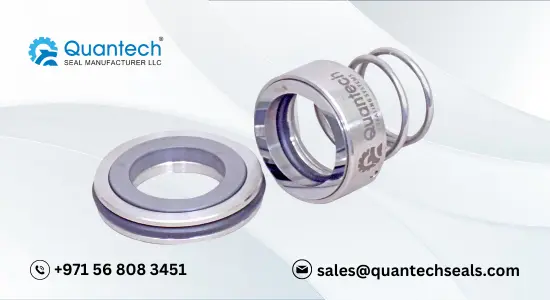
Multi Coil Seal
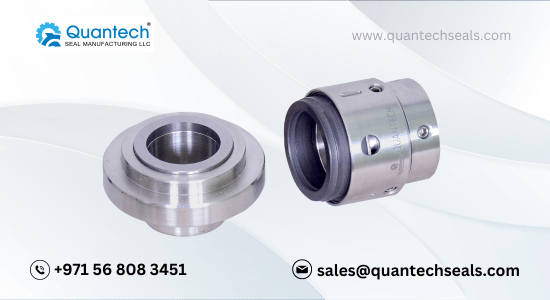
Bellow Type Mechanical Seal
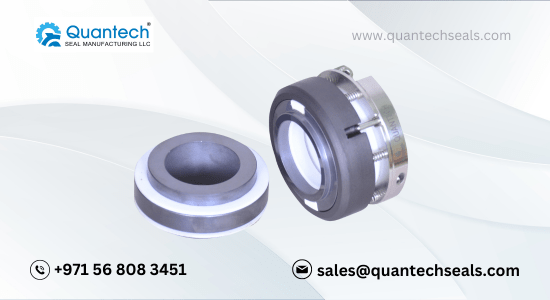
Wave Spring Mechanical Seal
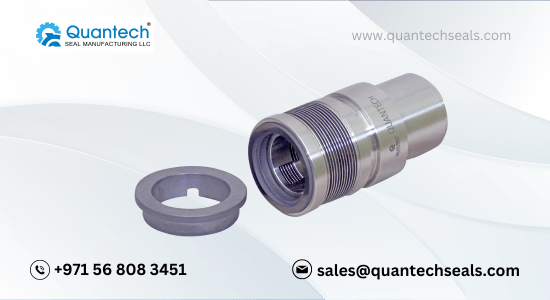
Cartridges Mechanical Seal
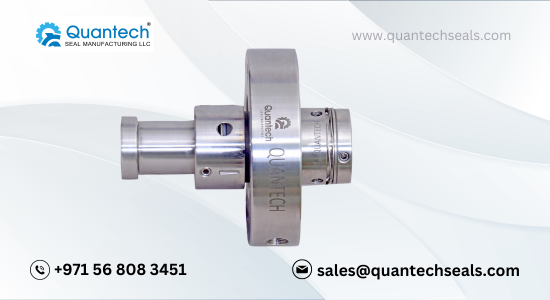
Reactor Mechanical Seal
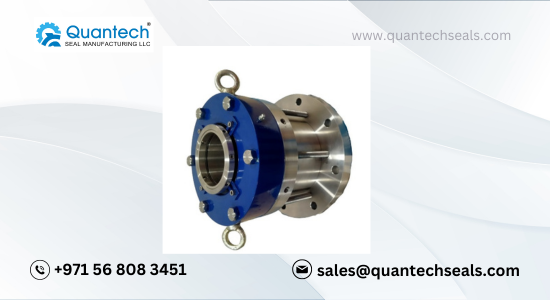
Mechanical Seal Manufacturer in Dubai, UAE.
If you are looking for Mechanical Seal Manufacturer in Dubai, United Arab Emirates. Quantech Seal LLC is the right choice for you. We measure your specific performance requirements and budget you need. For a detailed price quote, please call +971503915144 or email sales@quantechseals.com. Our team experts will help you with the latest products and standards ensures the best possible Mechanical Seal for your applications.

